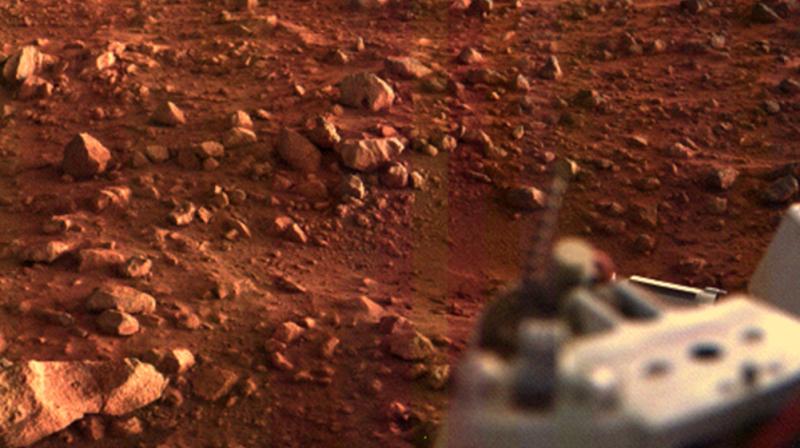NASA's Viking 1 accidentally burned Martian organic compounds in 1976

In 1976, when the Viking 1 rover landed on Mars, it started its mission of sampling Martian soil in search of proof of life. However, the rover couldn’t find anything, thus denying any presence of building blocks of life on Mars. However, when Curiosity landed decades later, it was able to find those very elements that Viking was supposed to deliver. What went wrong?
The Viking 1 Lander contained an oven equipped with an onboard Gas Chromatograph Mass Spectrometer (GCMS). As per the plan, the rover scooped up Martian soil and started its investigation. However, the system couldn’t detect any trace of organic compounds. The investigation into the matter after Curiosity discovered the same was done, highlighting the reason why NASA couldn’t announce their discovery decades ago.
While heating up the soil sample in Viking 1’s soil sampler, the over accidentally burned the organic compounds, eventually erasing any proof of evidence of the presence of basic life building compounds. Therefore, despite the presence of organic compounds on Martian soil, scientists at the time were not able to determine the possibility of the presence of organic compounds on Mars.
In a report by CNET, Chris McKay from NASA's Ames Research Center in California mentioned that the Viking 1 was able to find some proof of elements of life. Out of the several experiments that the spacecraft carried, one of the Viking 1’s experiments could gather proof of Martian microbes. However, due to the failure of the GCMS system, scientists could not assure the presence of such microbes.
Therefore, while the world believes that Viking 1 accidentally burned evidence of life, it was a different case in reality. The sampling system accidentally burned the organic compounds, letting scientists believe that there were no life-building blocks on the planet. Present-day missions are still hunting for evidence of life on Red Planet, with manned-missions to help with the aim in the future.
Click on Deccan Chronicle Technology and Science for the latest news and reviews. Follow us on Facebook, Twitter.

